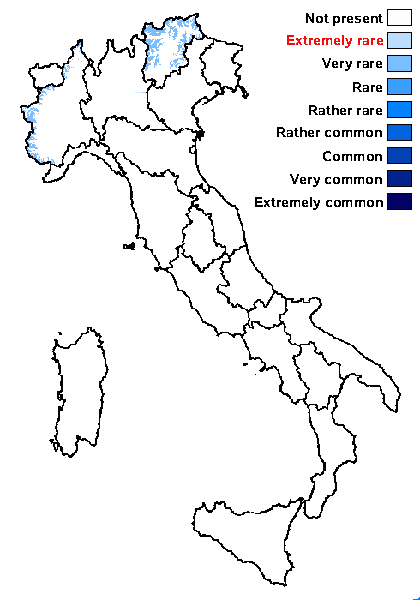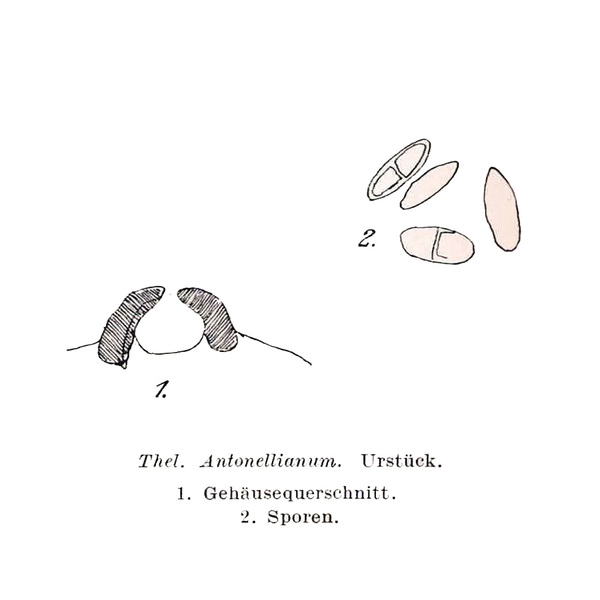Thelidium antonellianum Bagl. & Carestia
Atti Soc. Critt. Ital., 2: 326, 1880.
Synonyms: Involucrothele antonelliana (Bagl. & Carestia) Servít
Distribution: N - TAA, Piem (Isocrono & al. 2004).
Description: Thallus crustose, endosubstratic or very thinly episubstratic, often developed only around the perithecia, usually poorly evident, dirty white, continuous. Perithecia black, 0.1-0.2(-0.35) mm across, half immersed in the rock, hemispherically projecting, not covered by a thalline layer. Involucrellum c. 70 μm thick, dimidiate or reaching the base of the perithecium, adpressed to exciple or slightly diverging in the lowermost part; exciple colourless to brown in lower part; hamathecium of periphyses and periphysoids, interascal filaments absent; hymenial gel I+ red (I+ blue at very low concentrations of I), K/I+ blue. Asci 8-spored, ellipsoid to clavate, I-, fissitunicate, the wall thickened above, with an ocular chamber, dehiscent by extrusion of a delicate rostrum, 73-93 x 22-36 μm. Ascospores 1-septate, hyaline to yellowish when overmature, narrowly ellipsoid, slightly pointed at both ends, 16-20(-22) x 6-8(-10) μm. Photobiont chlorococcoid. Spot tests: K-, C-, KC-, P-, UV-. Chemistry: without lichen substances.Note: a poorly known species of crystalline, weakly calciferous schists above treeline, reaching the nival belt. The type material, from the Italian Alps, was collected at 4.500 m.
Growth form: Crustose
Substrata: rocks
Photobiont: green algae other than Trentepohlia
Reproductive strategy: mainly sexual
Poorly known taxon in need of further study
Commonnes-rarity: (info)
Alpine belt: very rare
Subalpine belt: absent
Oromediterranean belt: absent
Montane belt: absent
Submediterranean belt: absent
Padanian area: absent
Humid submediterranean belt: absent
Humid mediterranean belt: absent
Dry mediterranean belt: absent

Predictive model
Growth form: Crustose
Substrata: rocks
Photobiont: green algae other than Trentepohlia
Reproductive strategy: mainly sexual
Poorly known taxon in need of further study
Commonnes-rarity: (info)
Alpine belt: very rare
Subalpine belt: absent
Oromediterranean belt: absent
Montane belt: absent
Submediterranean belt: absent
Padanian area: absent
Humid submediterranean belt: absent
Humid mediterranean belt: absent
Dry mediterranean belt: absent

Predictive model
 INDEX FUNGORUM
INDEX FUNGORUM
 GBIF
GBIF
 DOLICHENS
DOLICHENS


